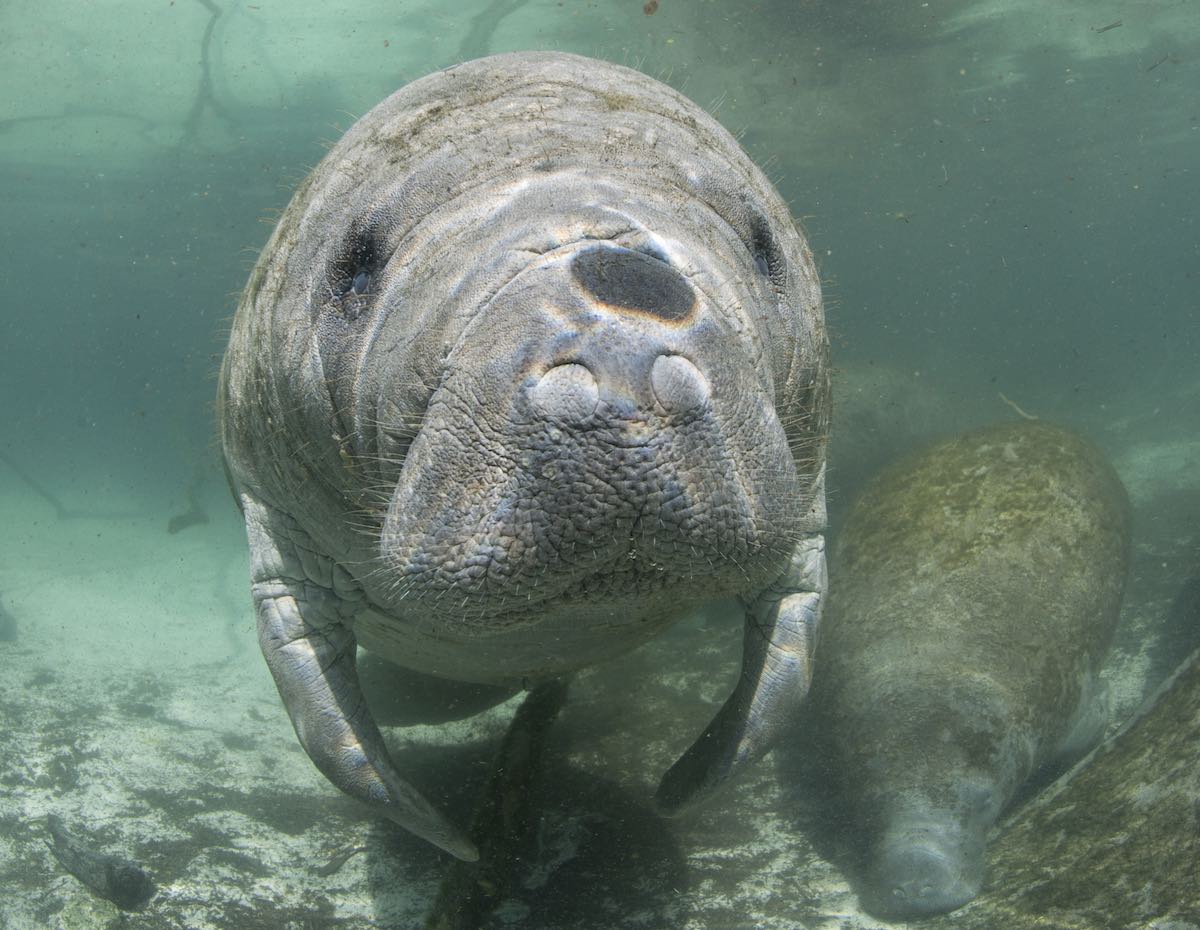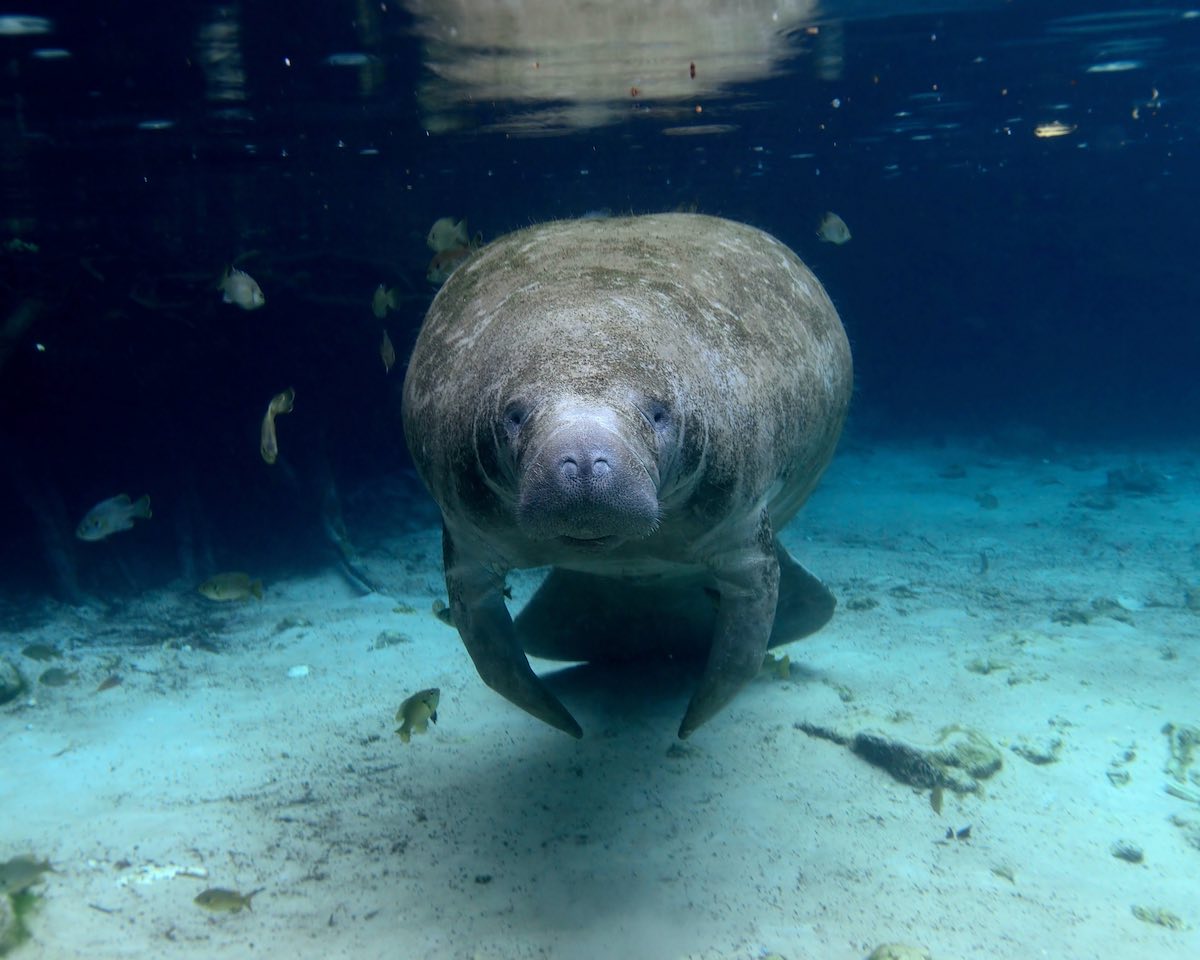3 Threats Facing Manatees Today
Published by Ocean Conservancy
There’s a reason why manatees are some of the most-loved animals in our ocean. Their gentle demeanor, slow-moving nature and affinity for warm waters make them both endearing and relatable. And, since they live in coastal waters close to humans, many people are lucky enough to see these gentle giants for themselves—a special treat for ocean lovers.
However, all three species of manatee—the West Indian, Amazonian and African manatee—face serious threats to their survival. The West Indian manatee, which is found in the Western Atlantic, Caribbean and Gulf of Mexico, was listed as Endangered in 1967 and has since been the subject of many conservation initiatives and legislation. In 1979, the Florida Governor named November “Manatee Awareness Month” to help promote manatee protection.
Increased attention to manatee conservation paid off. In the early 1990s, there were only about 1,200 manatees in the state of Florida. In 2018, that number rose to 6,100—a fivefold increase in less than three decades. They’ve officially been delisted from “Endangered” to “Threatened”.
While growing manatee numbers is GREAT news, these gentle giants still face a long road to recovery. Just because there are more manatees than there used to be, it doesn’t mean they’re out of the woods.
During Manatee Awareness Month, we want to highlight the threats still facing this beloved marine mammal. Here are three threats that manatees encounter today:


Boat Strikes
Manatees live in coastal waters, estuaries and rivers—which happens to be where there is a lot of boat traffic. They also feed on seagrasses that grow in sunny, shallow waters, meaning they spend a lot of time close to the surface, putting them more at risk for boat strikes. Collisions with boats remain the leading cause of human-related death for manatees. This year, boat strikes are on the rise, with 89 manatees killed by motorboats in the first half of 2019, compared to only 65 in the first half of 2018. However, not all boat strikes result in death: a 2004 study found 97% of manatees have boat strike scars.
What can you do? Boaters should always avoid manatees and follow posted signs in manatee zones. Also, never feed manatees as it teaches them to approach boats (it’s also illegal under the Marine Mammal Protection Act!)


Harmful Algal Blooms
Harmful algal blooms are a growing threat to manatees and other ocean wildlife. Red tide (one of the most common types of Harmful Algal Blooms (HAB)) occurs when the naturally present Karenia brevis microorganism grows rapidly in large numbers. In 2018, Florida experienced one of the worst red tide events in state history. At its peak, blooms spanned nearly 1,000 miles of coastline from Pensacola to Port Canaveral, and had an area comparable to the size of the entire state of Connecticut. Manatees can be poisoned by red tide, as they consume seagrasses that can contain red tide toxins, and can breathe in airborne toxins when they go to the surface for air. As the toxin build up, they can suffer seizures and even drown. In 2018, 26% of deceased manatees recovered by Florida Fish and Wildlife (FWC) died due to red tide exposure.
What can you do? Always report sightings of sick or distressed manatees to local authorities. Ultimately, we need to reduce the nutrient inputs that exacerbate red tide events and restore clean water flows to manatee habitat (check out Ocean Conservancy’s guide for Florida residents here).


Entanglement in Marine Debris
Manatees are one of many animals negatively affected by marine debris. Manatees can become entangled in discarded fishing gear or consume plastic trash—similar to what we’ve seen in other animals like turtles, whales and sharks. Entanglement can even lead to amputation of manatee flippers. A 2017 study showed that over 20 years, 11% of deceased manatees studied had ingested trash or shown signs of entanglement.
What can you do? Always properly dispose of trash and help remove marine debris from the ocean during ocean cleanups. Check out our International Coastal Cleanup and find a cleanup near you. And as always, if you see a manatee in distress, report it to local authorities.
Although these are some of the major threats facing manatees today, they’re not the only ones—manatees are also at risk due to habitat loss, climate change and shoreline development. But the good news is we know how to help them! With growing public awareness about the plight of manatees and continued funding for manatee research and conservation, we can help protect these gentle giants for generations to come.
Sign up for our emails!
The post 3 Threats Facing Manatees Today appeared first on Ocean Conservancy.
Read the full article at: https://oceanconservancy.org/blog/2019/11/05/threats-manatees/


